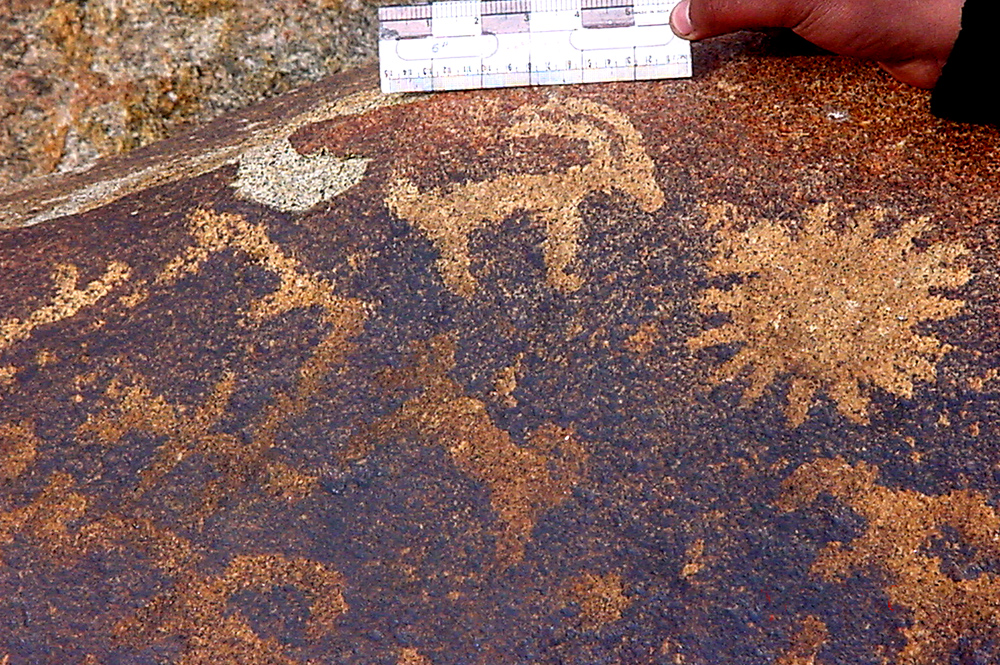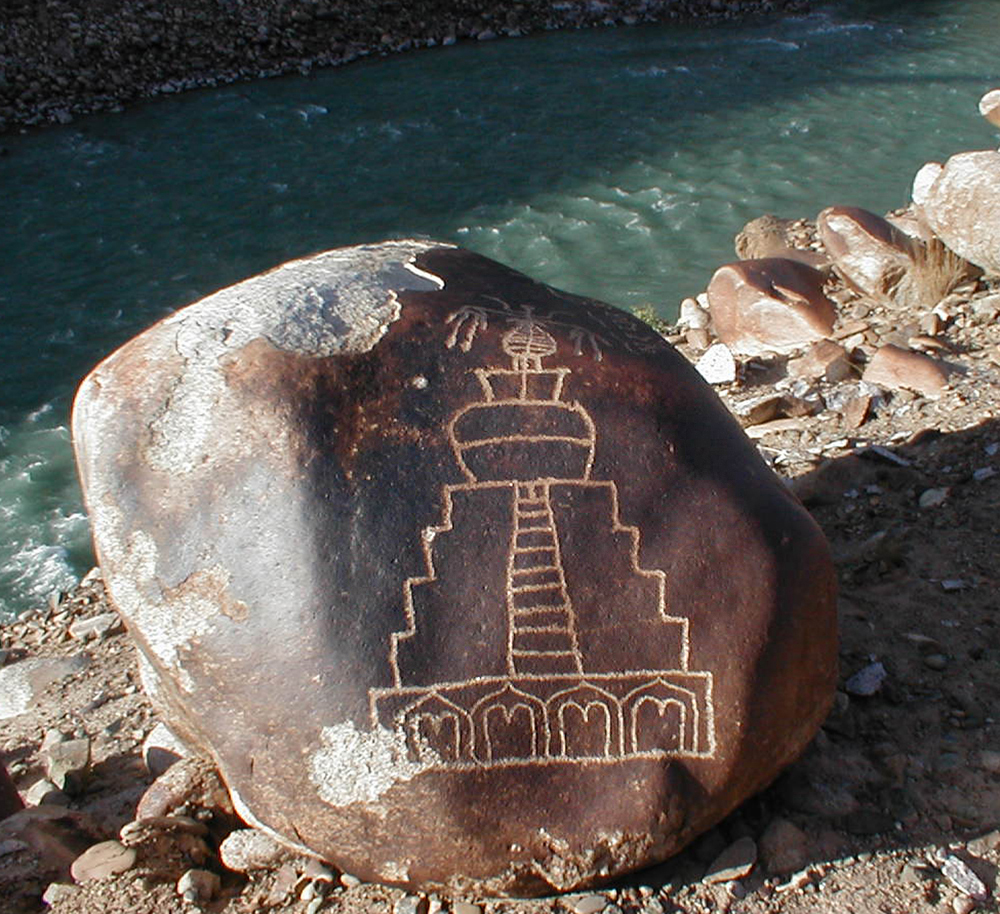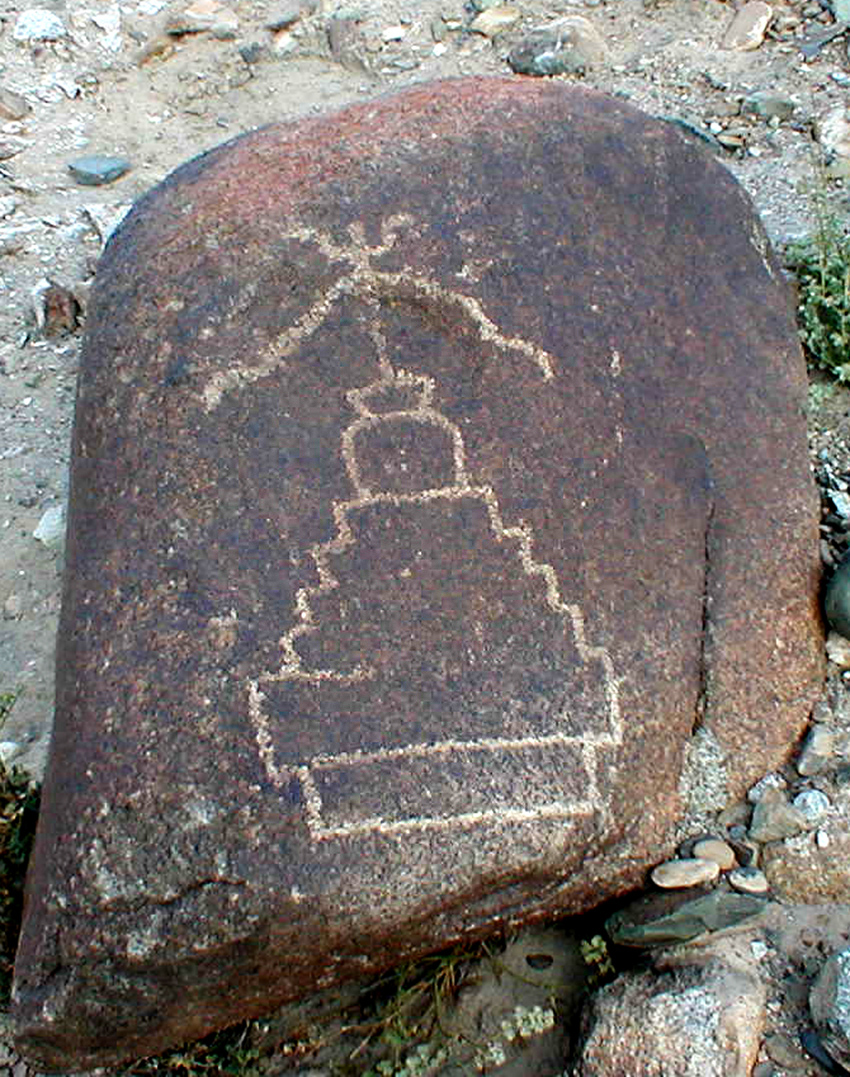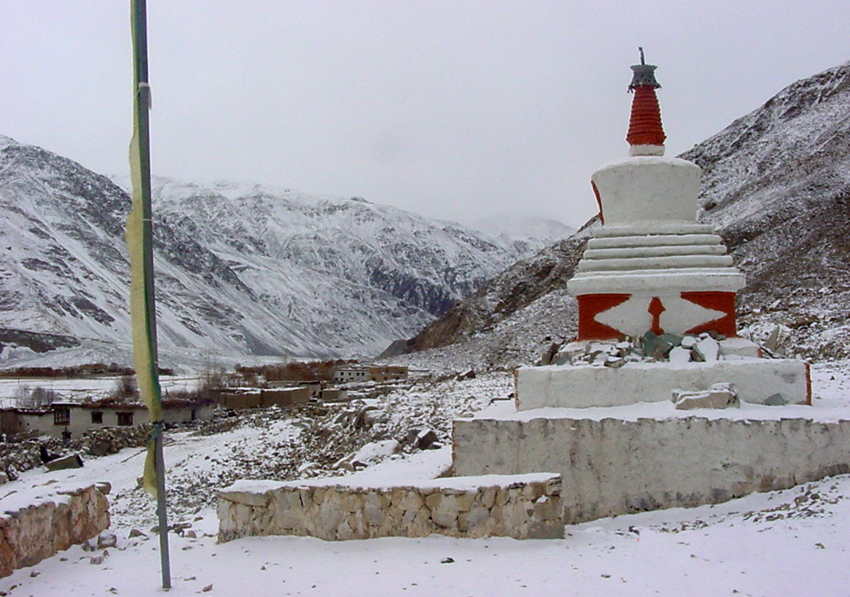


The Indus is a major river which crosses Ladakh, flowing from southeast to northwest and having confluences with Zanskar and Shyok. Since ancient times the region of the upper Indus river has been an important crossroads between central Asia and the Indian subcontinent.

During my stay in Ladakh in 2002 I was fortunate enough to visit many petroglyphs sites not only in the centre of Ladakh area but also the neighbouring countries border area, thanks to the Indian Army and my husband Colonel Girish Pathak. I have now documented many sites in various locations; Taru, Nimmu, Likir, Alchi, Khalsi, Stakna, Karu, Upshi, Kyari and Tangste.
Petroglyphs of #Ladakh in #India #Indus #Buddhism #Stupashttps://t.co/KWQG8YBPFV pic.twitter.com/Rtn24LsuuF
— Bradshaw Foundation (@BradshawFND) September 2, 2016
For many millennia hunters, traders and pilgrims from those areas have passed through this region and left signs of their cultures and their religions. Ladakh in the Himalayas is one of the most elevated regions on the earth inhabited by humans since the stone age.

The major sites along the Indus River are situated about 15-25 kms from one another. They could have been resting places for the people and their animals, and to interact with other groups.
The petroglyphs were mostly made on dark boulders coated with desert or rock varnish. The ancient artists used smooth flat surfaces. Animal forms are abundant as well as hunting scenes, symbols and undetermined motifs.
The oldest Ladakh petroglyphs are thought to be about 5,000 years old. Animals are larger in size, signifying their importance as they provided the much needed food and hides necessary for survival in the harsh climatic conditions of the cold Ladakh deserts. Hunting scenes of ibex and yaks are also depicted. With the arrival of Buddhism in the region some 2,000 years ago, the subjects of petroglyphs shifted from hunting scenes and other symbols to Chortens, a kind of temple, and ibex, an animal blessed by the Lord Buddha. Such petroglyphs appear to belong to very recent times and none of the Chortens have rock varnish on them.

The Ladakh petroglyphs are attributed to the Prehistoric, Early historical, and Later historical times. The earliest include animals and humans in different attitudes like hunting, dancing, horse riding and symbols of sun, palm, swastika, cross, spiral and floral patterns. They are sometimes copied in later periods also as is evident from their overlapping on granite boulders. The latest ones represent Stupas or Chortens with or without inscriptions.

The best site is Alchi, near the bank of the Indus river with many boulders engraved with Stupas in different styles. Some just show a single Stupa. Others have Stupas with inscriptions, sometimes in a row of two, three or four.
Due to their ignorance, some local people damage the boulders to construct their houses. With the help of the Army, we have protected the rock art site of Kharu and created a petroglyph park near the bank of the Indus river.
Meenakshi Dubey-Pathak
Ref: 2006, 'Amazing Petroglyphs of Laddakh'. Journal, The Educationist, AEC (Army Education Corps), Pachmarhi, MP. Meenakshi Dubey-Pathak.
2011, 'Stupas in Petroglyphs of Ladakh'. International Newsletter of INORA. (IBAN-FR7613135000800810229531780), France (pg no.21-26).Meenakshi Dubey Pathak.
Images: Meenakshi Dubey-Pathak
Visit the India Rock Art Archive:
http://www.bradshawfoundation.com/india/index.php
by Bradshaw Foundation
Friday 09 August 2024
by Bradshaw Foundation
Wednesday 24 July 2024
by Bradshaw Foundation
Thursday 04 July 2024
by Bradshaw Foundation
Monday 01 July 2024
by Bradshaw Foundation
Wednesday 20 March 2024
by Bradshaw Foundation
Tuesday 13 February 2024
by Bradshaw Foundation
Tuesday 13 February 2024
by Bradshaw Foundation
Thursday 01 February 2024
by Bradshaw Foundation
Tuesday 28 November 2023
by Bradshaw Foundation
Thursday 23 November 2023
by Bradshaw Foundation
Monday 20 November 2023
by Bradshaw Foundation
Tuesday 31 October 2023
by Bradshaw Foundation
Thursday 26 October 2023
by Bradshaw Foundation
Wednesday 20 September 2023
by Bradshaw Foundation
Monday 17 July 2023
by Bradshaw Foundation
Sunday 09 July 2023
by Bradshaw Foundation
Friday 09 August 2024
by Bradshaw Foundation
Wednesday 24 July 2024
by Bradshaw Foundation
Thursday 04 July 2024
by Bradshaw Foundation
Monday 01 July 2024
by Bradshaw Foundation
Wednesday 20 March 2024
by Bradshaw Foundation
Tuesday 13 February 2024
by Bradshaw Foundation
Tuesday 13 February 2024
by Bradshaw Foundation
Thursday 01 February 2024
by Bradshaw Foundation
Tuesday 28 November 2023
by Bradshaw Foundation
Thursday 23 November 2023
by Bradshaw Foundation
Monday 20 November 2023
by Bradshaw Foundation
Tuesday 31 October 2023
by Bradshaw Foundation
Thursday 26 October 2023
by Bradshaw Foundation
Wednesday 20 September 2023
by Bradshaw Foundation
Monday 17 July 2023
by Bradshaw Foundation
Sunday 09 July 2023
Friend of the Foundation











